QoS and energy aware cooperative routing protocol for wildfire monitoring wireless sensor networks
- PMID: 23843735
- PMCID: PMC3697398
- DOI: 10.1155/2013/437926
QoS and energy aware cooperative routing protocol for wildfire monitoring wireless sensor networks
Abstract
Wireless sensor networks (WSN) are presented as proper solution for wildfire monitoring. However, this application requires a design of WSN taking into account the network lifetime and the shadowing effect generated by the trees in the forest environment. Cooperative communication is a promising solution for WSN which uses, at each hop, the resources of multiple nodes to transmit its data. Thus, by sharing resources between nodes, the transmission quality is enhanced. In this paper, we use the technique of reinforcement learning by opponent modeling, optimizing a cooperative communication protocol based on RSSI and node energy consumption in a competitive context (RSSI/energy-CC), that is, an energy and quality-of-service aware-based cooperative communication routing protocol. Simulation results show that the proposed algorithm performs well in terms of network lifetime, packet delay, and energy consumption.
Figures




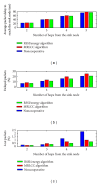
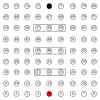

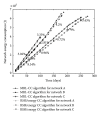
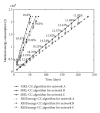
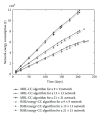
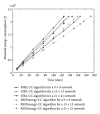

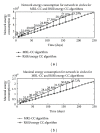
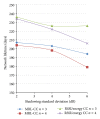
Similar articles
-
Multisensor network system for wildfire detection using infrared image processing.ScientificWorldJournal. 2013 Jun 16;2013:402196. doi: 10.1155/2013/402196. Print 2013. ScientificWorldJournal. 2013. PMID: 23843734 Free PMC article.
-
An energy-aware routing protocol for query-based applications in wireless sensor networks.ScientificWorldJournal. 2014 Feb 13;2014:359897. doi: 10.1155/2014/359897. eCollection 2014. ScientificWorldJournal. 2014. PMID: 24696640 Free PMC article.
-
A survey on temperature-aware routing protocols in wireless body sensor networks.Sensors (Basel). 2013 Aug 2;13(8):9860-77. doi: 10.3390/s130809860. Sensors (Basel). 2013. PMID: 23917259 Free PMC article. Review.
-
Genetic algorithm application in optimization of wireless sensor networks.ScientificWorldJournal. 2014 Feb 16;2014:286575. doi: 10.1155/2014/286575. eCollection 2014. ScientificWorldJournal. 2014. PMID: 24693235 Free PMC article.
-
Applications of wireless sensor networks in marine environment monitoring: a survey.Sensors (Basel). 2014 Sep 11;14(9):16932-54. doi: 10.3390/s140916932. Sensors (Basel). 2014. PMID: 25215942 Free PMC article. Review.
Cited by
-
Comparison of Collaborative and Cooperative Schemes in Sensor Networks for Non-Invasive Monitoring of People at Home.Int J Environ Res Public Health. 2023 Mar 27;20(7):5268. doi: 10.3390/ijerph20075268. Int J Environ Res Public Health. 2023. PMID: 37047884 Free PMC article.
-
Optimal Energy Resources Allocation Method of Wireless Sensor Networks for Intelligent Railway Systems.Sensors (Basel). 2020 Jan 15;20(2):482. doi: 10.3390/s20020482. Sensors (Basel). 2020. PMID: 31952179 Free PMC article.
-
Application of reinforcement learning in cognitive radio networks: models and algorithms.ScientificWorldJournal. 2014;2014:209810. doi: 10.1155/2014/209810. Epub 2014 Jun 5. ScientificWorldJournal. 2014. PMID: 24995352 Free PMC article. Review.
-
Towards Reliable and Energy-Efficient Incremental Cooperative Communication for Wireless Body Area Networks.Sensors (Basel). 2016 Feb 24;16(3):284. doi: 10.3390/s16030284. Sensors (Basel). 2016. PMID: 26927104 Free PMC article.
-
Towards a Secure Thermal-Energy Aware Routing Protocol in Wireless Body Area Network Based on Blockchain Technology.Sensors (Basel). 2020 Jun 26;20(12):3604. doi: 10.3390/s20123604. Sensors (Basel). 2020. PMID: 32604851 Free PMC article.
References
-
- Liang X, Chen M, Xiao Y, Balasingham I, Leung VCM. MRL-CC: a novel cooperative communication protocol for QoS provisioning in wireless sensor networks. International Journal of Sensor Networks. 2010;8(2):98–108.
-
- Tham C-K, Renaud J-C. Multi-agent systems on sensor networks: a distributed reinforcement learning approach. Proceedings of the Intelligent Sensors, Sensor Networks and Information Processing Conference; December 2005; Melbourne, Australia. pp. 423–429.
-
- Nosratinia A, Hunter TE, Hedayat A. Cooperative communication in wireless networks. IEEE Communications Magazine. 2004;42(10):74–80.
-
- Kaelbling LP, Littman ML, Moore AW. Reinforcement learning: a survey. Journal of Artificial Intelligence Research. 1996;4:237–285.
-
- Buşoniu L, Babuška R, De Schutter B. A comprehensive survey of multiagent reinforcement learning. IEEE Transactions on Systems, Man and Cybernetics C. 2008;38(2):156–172.
Publication types
MeSH terms
LinkOut - more resources
Full Text Sources
Other Literature Sources

